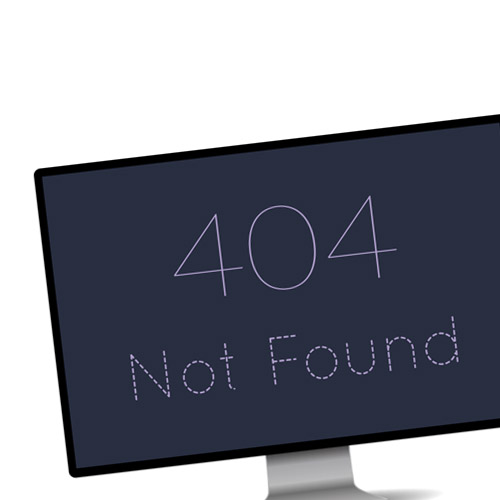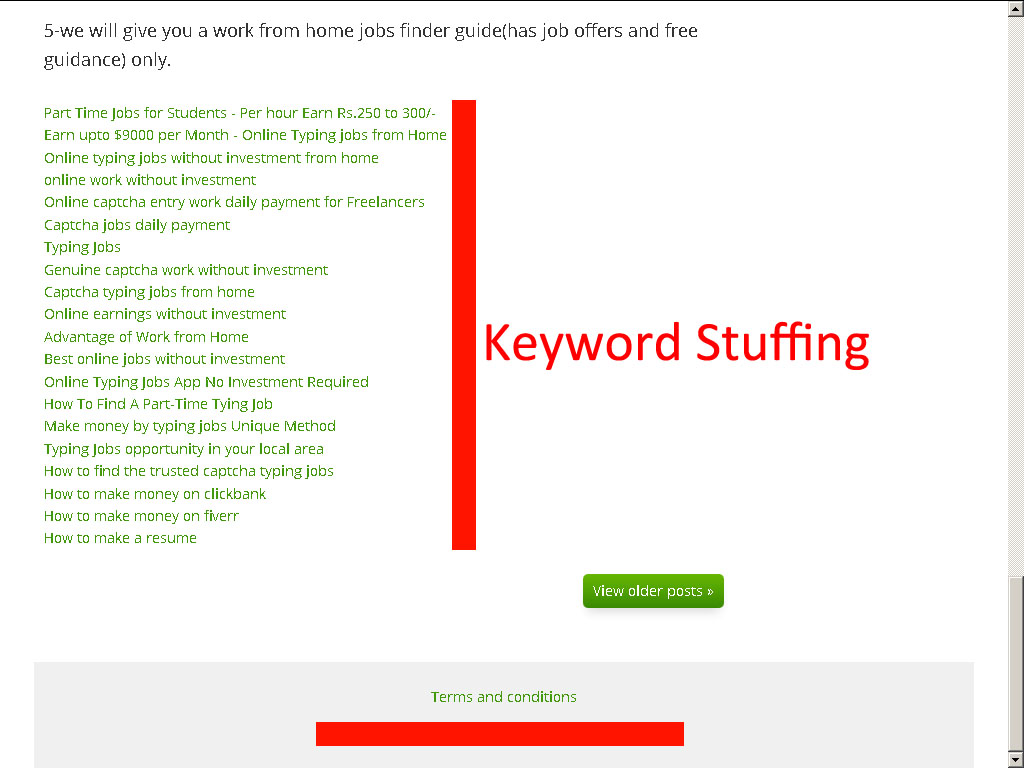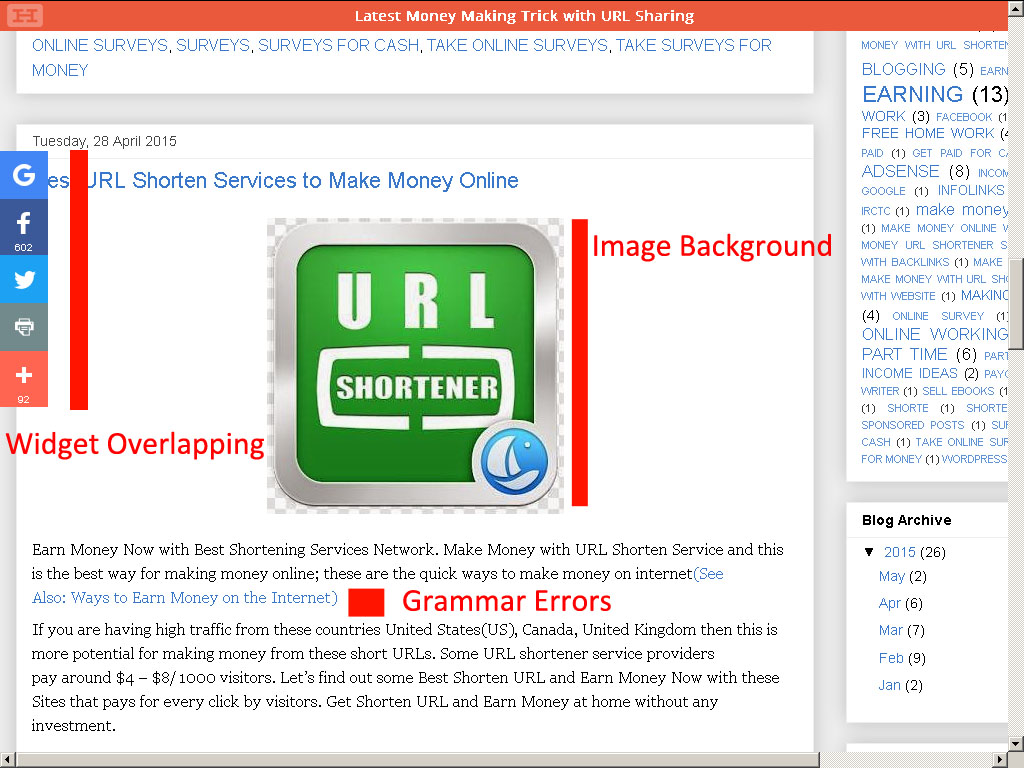
by Wilson Pina | Nov 8, 2017 | General
There are two ways you can establish yourself in order to have your site become well-known, grow a large user-base and earn the potential to make decent profits.
And it is not the usual time-wasting, “almost sold out but you’re in just in time” or “usually it would cost you $999 but for you, just $99” formula X being constantly advertised in long sales pitch pages.
Search Engine Marketing, such as Google AdWords and YAHOO/Bing Network, those ads you see right on the top of your Results Page when you type a keyword.
Here’s an example with the keyword “Hotel”…
It depends on how other search engines do in order to decide which ad will go to which position but Google does it through a bidding system with the keywords selected. The highest bidder for any given keyword will get the top positions. Generally speaking, the odds of being put there are directly proportional to the amount of money you’re willing to spend on the ad.
That so happens to be the catch: advertising has costs, which may or may not be viable, depending on the site.
The second one is Email Marketing.
As the name goes, you are sending emails of posts from your site, a promotional campaign you have created or something similar, directly to readers who agreed to receive your emails.
Email Marketing allows you to advertise products, let people know what’s new around you and what other media you’ve set it up to post, without having to do it manually and constantly.
Suppose you wanted your readers to get the new blog post in their inbox so they wouldn’t miss it. This function is already native in many Email Marketing Systems. You only need to configure the email template (the general look and layout) and drop the RSS link of your blog.
In this regard, and if you have a series of posts or emails already arranged to be delivered, this service will do the sending for you, 100% hands-free while ensuring you won’t disconnect from your regulars.
Let’s go through this by parts. First…
As always, webmasters who haven’t finished building their sites, sites with poor traffic or with posts being made on an irregular basis should probably fix those issues instead since this will, more often than not, require a financial investment. To get the most bang out of your buck, you absolutely need to ensure there will be something new coming into play on a regular basis to justify the service you hired.
If you don’t already have subscribers, that’s not a problem. Amassing them through your website is entirely possible and relatively simple. The TRI started its email marketing like that.
Spammers should go without saying and unless you own an e-store, overly commercial webmasters should also reconsider getting one. In the latter case, it’s a matter of changing the approach.
Even if a site is new and doesn’t have traffic but it is complete, has a few posts of its own and more of them coming then this is a definite plus.
The reason why I believe the lack of subscribers in an initial phase is not a concern is due to the quality vs quantity difference. 10 active subscribers are more likely to bring more life to the said website than 100 that barely read the emails in the first place.
Apart from the set of tools already given by the provider, like analytics, free images, integration with other platforms, surveys, etc.
With this, we’ve covered that not using Email Marketing Systems for website promotion may result on webmasters missing out on plenty of positive aspects that would help their startup grow another notch.
But these platforms have to be operated in the manner they were intended to. Using them incorrectly is worse. What follows below is a set of actions that can be considered misuse of this service.
1 - Misusing your Mailing system
Mass mailing, incorrectly connecting to social networks or send many emails over a small timeframe will lead to a high volume of unsubs and complaints. Too many of them will make you talk to yourself or have you removed from the Mailing system.
If you use the RSS to email feature consider making a weekly digest of your posts instead of sending them every time they are published. This avoids flooding your readers with numerous mails and unsubscribing of valuable members.
2 - Emulating a Mailing system
That is using your personal email (@hotmail.com, @gmail.com [except for business] @yahoo.com) to contact people. Not to mention that in some jurisdictions, this is not allowed on top of looking unprofessional.
Auto-responders start from free to 20, so there isn’t any need for this. And most filters will simply throw your emails away from the inbox.
3 - Buying email lists
Email lists you’ve purchased belong to users which did not agree to receive your newsletter and have not signed up for it via an opt-in form and confirmed the subscription. Some mailing systems send a confirmation email users must click in order to receive the first email.
If they didn’t, this almost guarantees your emails will end up in the spam box, because the user never had the chance to whitelist the sender, and will get you ignored or blocked from the recipient.
Also, since they cost around $800, it’s a very poor investment given that conversion rates are bound to be extremely low due to the above fact.
Finally, if these email addresses are submitted to an Auto-responder Service and accumulate enough complaints, the account might be closed.
This article raises some questions, along with the fact I’ve stated we’d thoroughly cover Email Marketing. But for the sake of keeping the series focused on the most common mistakes Affiliate Marketers do, we will not address them here and will make the appropriate posts on the Portal instead. in a timely manner, we will approach subjects such as…
And other related aspects of this effective marketing solution. Still, if you would prefer getting ahead, for now,
TopTenReviews has a direct comparison between the most popular service providers of this field. Yet, you are always welcome to…
Not using Email Marketing Systems – The Conclusion
If you don’t want to go through the trouble of acquiring and setting one up, there are alternatives for that, especially if you use WordPress.
Some plugins can deliver the new posts by email but to have a more refined control of how and when they are delivered and to create a complete campaign and segmentation of your subscribers, I don’t see another way that will be as effective.

by Wilson Pina | Nov 1, 2017 | General
When I go to work through the train, it’s very difficult to find someone who doesn’t have a smartphone glued to their hands, swiping their fingers up and down or talking during their entire trip, like the above image.
People are connected to a vast amount of reasons on their social media accounts and remain connected for long periods.
Many of them intended to be for businesses only but when the potential to attract all sorts of users became worth exploring, we got ourselves a brand new world unlocked.
What used to take minutes, hours, days and a few bucks, is now done instantly and for free.
Talking to someone on the opposite side of the planet only requires you to connect with the said person and presto! Even if one of them isn’t online, you can always drop them a message.
How convenient, huh?
In the same manner that a person will want to communicate with their loved ones, a corporate entity might want to try a closer approach with its customers and backers.
There are multiple approaches to reach that goal, such as telemarketing, if the intention is selling and direct mailing, to provide generic information, apart from already existing contact options where the client or supporter takes the initiative. But those two are becoming deadbeat horses. Not to mention people, in a general sense, don’t like receiving junk mail or being phoned all the time.
If such a company wants to get close enough, without spending a fortune for the same effect, the solution is using the same platform as their users: Social Media.
An interesting story about that came from the official World of Tanks Forum.
I couldn’t find the thread but it was concerning a user being upset about an email he considered misleading and pondered about why a company would send such emails in the first place.
Note that he had left the community for some time.
Another one explained to him that, out of the emails sent, if some returned as paying customers, the company would have not only recovered some of their lost users but also made a profit, which would justify the effort.
Despite this example is referring to Email Marketing, which we will thoroughly cover in the future, the principle is the same for social network marketing.
Now let’s delve back to websites bearing what was said in mind.
We have established that:
What about webmasters? They can capitalize that traffic pool just as efficiently.
If any given website doesn’t drive enough organic traffic, it will surely benefit from a fan page based on an active social network. If the fan page or even the main account is already active that’s a major plus for the site.
It becomes a matter of simply dropping a link to a blog post or a relevant page of your site.
If you don’t already have a fan page or your main account is not very active, then you got work to do. This means your attention must be divided to the site and whatever networks you intend to use. However, this must be conducted in harmony and not place more effort in one in detriment of the other.
I’ve compiled below a few tips that will help you increase the interaction with your fan page. More may be added in the future as well.
1 – Invite your friends
The first thing you should do is follow your own pages yourself. After that, recommend it to people on your circles or friend’s list to join. Word of the mouth is often the best place to start with.
2 – Synchronize the pages
When it comes to blogging, bringing something new to the table on a daily or weekly basis has to be the standard. On fan pages, the same applies. Every time something new is added to the site, schedule a fan page post with a summary of the new post or page with a link to it and then share it.
Since we’re talking about a fan page with little or no followers, that won’t have a big effect, but newcomers will see past and present updates in a way that suggests your site is active.
3 – Start Contests
Contests are a sure-fire way of having people joining in. One of the main contest requirements is usually something that benefits the site, such as liking/following the page or inviting other friends. Facebook gift cards, raffles and other freebies get people interested because they will get something for free and normally without having too much legwork but any reward that gives them a return on the same level tends to work out just nicely.
On the TRI we have some ideas for contests ourselves. We will post them on the main site and update this part of the thread when it goes live, to further exemplify and help you put into action some of these ideas.
4 – Connect with others
Posting as a page is an important aspect as well. Keeping your page on par with your site is only half of the battle and shutting oneself in a hermetic posting pattern only on the fan page itself limits your interaction with those who already follow you.
You want to keep those and provide new content, however, cultivating a relationship with businesses, consumers or readers from outside your immediate chain can give you plenty of other benefits that will contribute to the increase of interaction with your page and later, your site:
- Ideas for new blog posts
- What your competitors may be up to
- How do you fare in comparison to others
- New ways to advertise yourself
- Finding more readers to your own site
In other words, don’t isolate yourself!
Number one? Facebook. Should go without saying, really.
Discovering someone who doesn’t have an account in it should be one tricky challenge.
Apart from Facebook, things aren’t as straightforward and will depend on what type of media you provide…
Success in YouTube/Twitch depends on you making videos and streams.
Twitter will require you to do the same as what we’ve seen in the previous chapter of this post: grow an audience.
Pinterest and Instagram are good for Photo or Infographics posts but will suffer from the problems we’ve already covered.
One link in Reddit brings you thousands of hits but people frown upon users who do nothing but advertise themselves.
StumbleUpon is good for creating lists of articles to condense several related topics in a single place so, it’s gonna pan out for posts alone or a combination of all of the above.
And it’s even more powerful than Reddit.
Not using Social Media – The Conclusion
It’s dumb not to. Sorry to put it so bluntly but it’s true. How many Social Networks do you use? I’m willing to bet it’s more than just one. Then why not use your account to advertise your site or even create a full-blown fan page?
Sure, it’s another site to work on and ideally, webmasters would only have to care for their own. But the diversity it creates opens the door for plenty of opportunities. Who knows which one will bring the more benefits to you?
Let us know how is it going for you. Have you seen success in capitalizing the potential hidden in Social Networks? Have you just began your first steps on it? Or you don’t use them at all? Why?

by Wilson Pina | Oct 25, 2017 | General
The XXI Century World offers plenty of opportunities like we’ve never seen before.
When it comes to enjoyment, investments solutions, day-to-day services, technology… the possibilities are endless and the benefits too numerous to list.
There are plenty of places you can go there and things to get to fill your everyday needs. Nowadays, you can even do that from the comfort of your bedroom, within a few clicks of your mouse and you can have several tasks done effortlessly.
This is more noticeable with smartphones: where you’d need to have several different devices to send emails, take screenshots or record video/sound, call or text someone or play games can now be done with a single device, which would only require a one-time investment.
And they are available almost everywhere. Since a lot of folks cannot afford to spend any time without them, whether business-related or just for leisure, that need has to be catered for, right?
So, that means you have all that power within the palm of your hand. Such power increases even more with applications created for your convenience. Depending on how you can keep up with technological advances and your wallet allows you to, these are available for as little as $60.
Tech and gadgets are an easy one.
When consumers receive their paychecks there’s one thing (or set of things) that they seldom miss. It’s almost like clockwork and the main reason why many work for in the first place: the much-vaunted utility bills and related expenses, which too, are as varied as everything else already described.
By now, you probably have noticed the sad part of finances which is part of today’s topic:
There are plenty of ways to spend money.
We’d never have debts if we had as many income streams as money drains. But the idea of having a job for every expense isn’t feasible. It isn’t necessary either because, generally speaking, we earn more than we spend.
I knew someone that had 2 jobs and was looking for a third. 2 part-times earned her more than a single full-time job. Still, there’s only so much time will allow you to do and someone working long hours won’t have to time to spend the money they make, regardless.
Online it isn’t much different. It’s logical that more money allows you to do more things and so, having multiple income streams is the way to go in that regard.
That also safeguards you from losing everything in one go. When someone gets laid off, their income is cut entirely and they need to search for another job. But having a second minimizes losses since should one fountain run dry, there will be another to dampen the fall.
This is where things go wrong.
No one should put their eggs in the same basket; we never know when it might rupture. Prevention is as simple as getting a new basket, that is, other income streams.
Affiliate Marketers are always searching for new opportunities and money-making sites. I generally consider this a good practice. A program with few members has a better-earning potential if it takes off just nicely or one that has a great earning potential despite having a few years under its belt.
The thing is that no one knows what affiliate programs will rise or fall and some affiliates join them based on what they hear what others say about it because someone said it’s easy and they will earn a lot of money effortlessly or simply because they need. Decisions founded in emotion and not reason.
It’s much easier to join 5 or so programs now, to figure out what your next move will be later – which is the Call-To-Action most of them use – than getting to know whether the said opportunity is suitable for you.
Generating multiple online income streams should be made in a manner you can scale up when the comfort zone is reached. Getting ahead of yourself will only lead to incomplete, abandoned projects and loads of frustration.
Consider there’s this month old site that sells ads and affiliate links but only has 3 blog posts and isn’t even completed. It will bring a lot less income, if any, than one that is finished, updated and has been around for more time.
What the webmaster needs to do first is to finish its layout and toolset, update it and start getting regulars. The readers he/she obtains then represent the comfort zone; where the dialogue goes both ways instead of just from the blog. At that point, the said webmaster can figure out what to do in order to monetize their traffic or increase the traffic even further.
With affiliate programs, the principle is the same: you shouldn’t join more than those you can manage, especially those that have a paid membership.
Now let us know how this relates to you. Have you opened affiliate accounts in various programs? Did it go well for you? Or are you still revising which will be your business model?

by Wilson Pina | Oct 18, 2017 | General
Getting rich quick is entirely possible and there are plenty of legitimate opportunities on the internet and on the outside. An interesting example of that is the FOREX Market: once available to small elites but now within the reach of almost all users.
It’s possible to generate 4-figure profits within the hour, which despite being insufficient to make you a millionaire but it’s more than enough for a cruise ship trip. A fine way to break the ice, if you ask me.
A case I remember when thinking of this post, was the webmaster on V7N sharing his story about he earned $197, give or take, through an affiliate link from his month old website.
We now have a notion of what’s possible from these examples and other REAL overnight stories.
But what those success stories don’t always disclose is usually what keeps everyone from achieving the same success. Let’s be honest here: it takes a lot of effort to find a gold mine and explore it. If somebody managed to find one that could be mined, they’d sell the gold, not the mine, right?
The untold aspect that sets apart the many that don’t earn any money from the few that do lies in knowing the difference between “rule” and “exception”.
In short, rules apply to everyone or are meant to be in effect for the majority. Exceptions are made when the rule is incompatible with a specific case.
Multi-Level Marketing programs have affiliates that join early, create learning centers, resource stores and all sorts of aids and media to advertise their referral links and the services they themselves provide.
This enables them to earn money from the affiliate program and the small empire they created to help others do the same, all at the same time as they earn from multiple streams.
This lets someone earn more than sufficient to work full-time in it.
To contrast with the above, MLMs also have members that don’t earn as much as the ones above but get extra pocket money or even a secondary income source. Either that or, more frequently, don’t earn anything at all.
It’s not difficult to guess right which is the rule and which is the exception. Albeit somewhat of a doubtful finding, the correspondent Wikipedia article corroborates with this view.
The ability to earn money online, and also offline through home-based business using systems that are proven to work attracts a lot of people
When you stumble upon a page where a fellow tells you a story of how he/she created this program that prints them money from overnight, it isn’t necessarily a hoax. It might have worked just perfectly.
Yet, I would hardly agree any given system is “proven” to work because it made one person rich.
The same system won’t work wonders for everyone and I don’t think it is supposed to. Why? Because a number of factors come into play:
Among others.
Still, people don’t always glance at this checklist to know if they have what it takes to make something from the program they joined beforehand and simply cling onto the hopes of closing the month with an inflated wallet…
…When in fact, that wallet belongs to the masters who created that program they signed up for while these affiliates leave empty-handed. It happens a lot in this industry.
That alone is very frustrating, isn’t it?
Expecting large returns was always an issue in affiliate marketing. But on the opposite side of the scale, did the affiliate put enough effort to really anticipate such big compensation?
From everything I’ve written so far in this series, this is not yet another symptom of what happens in a webmaster, affiliate or user would consider the appropriate course of action:
This is the root of all of those problems and others I am yet to write about. More concisely it is…
One of the posts I think I wrote for WINTEMO that I never actually posted it was the laundry exercise.
Poke your head out in the window and look for any store
Yes. I’m serious. Stop reading right now and go ahead. Look for any business, restaurant, shop, big or small, take note of 5 things the store has. Write it on a piece of paper if you can’t memorize all 5. Then come back.
Got it? No? Then take a second look. Ready? OK
Which one of those characteristics, objects or details about that store can be obtained for free or take very little effort or time to make? Or to own?
See, to get a store like that, first, you need to decide what business type you expect to have. In the WINTEMO example, it was a laundry place.
To get it going, you have to rent the space, handle paperwork, taxes, buy equipment, a couple staff members, cleaning supplies, print and distribute pamphlets to let everyone know you’re opening, and other things between those lines.
You might be able to turn a restaurant in a laundry shop within 24 hours, but that’s gonna take you a lot of effort. Financial and time efforts are only the biggest ones.
It’s important to have some goals set up as a guideline, especially when it’s a continuous work, like the job of a webmaster. To help you define yours, I’ve compiled a short list of aspects I consider to be of utmost importance.
1 - Be reasonable
Some investments only give their return in the long run and you’ll need to be patient enough to wait and see the results later.
While there are plans that do pan out quickly, you shouldn’t be counting on yours to be one of them. In the agricultural sector, a seed planted today won’t sprout tomorrow. Likewise, whatever seeds you plant now will take its time to give you fruits.
Do invest, but don’t just stand there waiting to see what happens; move to something new and get some work done on the sidelines.
2 - Don’t take others as a standard
Other people are different than you. They might have better or worse tools than you, but the point is they used them in a manner which probably will differ from yours. Results between two or more people will differ due to the aforementioned reasons even if their starting point is the same.
As stated, it should be noted as a reference to what is possible.
3 - Start small and scale your way up
Successful entrepreneurs today began flipping burgers yesterday. If you’re about to start, start small. In my personal case, they were pizzas and handling 4 websites, the former might be over, yet the latter is no sweet deal.
Try it with one and when you have an audience that justifies expansion, open a follow-up project you can keep up with.
4 - Break down your goals
Make a list of smaller objectives that are part of the larger checkpoint you want to reach in the long run.
What you want to achieve, how long should it take you to take there, how much are you willing to invest in it are all factors that must be set up before working on it.
Expecting huge returns – The Conclusion
Can you have it all? The answer is yes. But getting it all in one go without any effort to obtain what you wish to receive, probably will never happen.
And let’s face it: if we got everything we ever wanted for peanuts, we’d be very likely not to appreciate it. People tend to put more value and cherish what took them blood, sweat and tears to get.
This process is also needed since it teaches us skills we’ll need further ahead.
Give us your opinion. Are you a webmaster that once investment too little or too much? Did it work for you or have you missed your objective?

by Wilson Pina | Oct 11, 2017 | General
Before giving Blogger and other free sites commonly used by new webmasters a rest, we’ll dissect another common practice that generates poor results, which is being inconsistent in how their blogs are used. This is tied to site layout though it also demonstrates a lack of willingness to step out of the ordinary.
In past posts, I’ve shown some examples of what other webmasters are doing in their sites that negates their potential to really grow and have a community of their own. Now, I’ll show one of my own.
The first WINTEMO iteration made on Blogger is still online. Seems I forgot to take it down! And from there to what the TRI has become today, plenty of things have changed.
Click the Image to enlarge and see what is wrong on that site.
All pages have the same layout as if every page and post was a single-page site. On top of that, the site did not possess much helpful content.
From there, you can’t access other pages, or jump to the blog, which frustrates users trying to browse the site. And nobody likes wasting time.
Now compare the same with the TRI’s Portal and the difference in the layout will be evident: you can go to the forums, the gaming corner and here since the links are always available; the blog allows you to preview older posts…
In other words, the Portal is uniform whereas WINTEMO was not.
Surely you have checked different Wikipedia articles of a given subject, like cars, Countries or flower types. Almost all of them have the same appearance but the contents differ.
This facilitates reading since users browsing the page will already know where to look for the information, where they can check the latest posts and how to jump to new ones. We can call this process “standardization”; to make the entire site, or parts of it, conform to an easily recognizable pattern.
In turn, that pattern gives out a professional outlook and working on your site’s image is (or should be) an important concern.
Betting on uniformity is a form of consistency.
When the articles are easy to find, readers are always on top of everything new added to the site. And this isn’t available in WINTEMO.
Unlike what people normally expect from a poor-looking site, it had brand new posts every week, almost every day; sometimes even more than once a day. This is important when a website is new.
Websites like The Huffington Post, with a single blog, attract millions after millions of hits. Why? Because they are already established in their niche. And even then the site is updated frequently
Another, less orthodox example, is Wargaming’s World of Tanks wiki pages. 6~7 years ago, if you googled for “KV-2”, a Soviet tank, the first result came from Wikipedia, a site people are familiar with and would normally get the information from.
Now, try it yourself and see which one comes first.
Feeding fresh new articles, content, media or anything else users can consume on a regular basis facilitates the discovery of your website. Because the content they produce is in such high demand, those are sites that a freshly created page will show up on the top search engine results seconds after being posted.
Keeping up a posting schedule might help in that regard. If like me, you’re a solo writer, it becomes much harder to write new articles every single day, but it’s still doable.
A number of strategies can help you regain that consistency or start having a stronger, more noticeable approach to the Blogosphere. We’re going to cover a few of them right below:
1 – Let other bloggers post for you.
This is known as guest posting. You can invite people you know directly to post on your website or let one of your users do it.
As a general rule, most users seeking to do guest posts are happy to oblige if you provide a link back to one of their social networks or their website.
There are only a few considerations you have to keep in mind if you choose to go this route:
-
Change the post to your website’s standards
While you can accept the post “as-is” and keep the post just the way the guest poster gave you, there probably some matters you’ll have to take a second look and edit.
What comes to mind when thinking about this are grammar errors but those are not usually a problem with serious or professional writers.
But there are other affairs too, like language, content coherence, links, references (either to real life events or comparisons that would appear/are best suited on Family Guy) and the like.
In case it doesn’t fit your blog’s style, edit it so it does. If you want him/her to reply to answers on your site during any given time frame make sure you let the original writer know of the changes. This is important so they are aware of what your users might ask.
As said above, the usual practice is to let others post for you, in exchange for a few links back pointing to websites of the writer’s preference. As always, some might be more than happy to do it for no cost whatsoever, but something in return is always appreciated.
You might want to take a look at what happens on their social media or websites. I don’t think most professional webmasters, or those seeking to become one, want to provide a link to someone who posts scandalous material online, be it of whatever nature.
Also, don’t rule out the idea of paying actual money for someone else to write for you. Just be wary with whom you spend it with.
You can see an example of the opposite in GuestBloggingTactics.com.
2 – Prepare your work beforehand

WordPress allows you to create a blog post and schedule it later if you’re not ready to let it go live yet.
A common practice in here is to completely write all the posts of any given series and post them in a fixed interval. Since we use WordPress, there’s the added bonus of being able to choose a day and time to publish a post.
If they’re ready to go, it becomes “set and forget”. We only need to worry about social media because, with the exception of Facebook that now provides a very similar function, we must publish the new articles manually or use applications such as Buffer or HootSuite.
3 – Have someone on the inside
In movies, journalists go to a specific detective to get intel for their new scoop, so they can later develop it into a story that is then broadcasted to us.
You can adopt a similar practice for your own posts by having specialists of specific fields to feed you information about them. For example, a website about smartphones will benefit a lot from having a couple contacts in Samsung.
Moreover, diversifying your contacts list is one of your goals as a blogger. Sometimes, it’s not a matter of what you know that other people might benefit from, but rather who you know (and since the subtopic are movies, that’s also the last line in Murder in 1600).
4 – Ask questions to your audience
Oftentimes, you’ll receive contacts from other bloggers or people in your immediate website circles. That level of interaction can be leveraged into a blog post. Questions, proposals, news…
Once we were contacted by another webmaster about a very useful tool that creates HTML meta tags automatically. As part of our reform program, we’ve removed the page but you can still check it through the link above.
Don’t have an audience? No problem! Proceed to #5.
5 – Connect with other sites
Like other blogs, forums… You can simply browse their websites and look for questions on the comments sections and even leave your own. In WordPress-based sites, this may also include a link to your site, which is also a plus.
Plenty of ideas for posts wait in other sites. Google Alerts will let you know of new blog posts related to your niche.
6 – Expand your team

Having a team of contributors to back you up, helps to lessen the load
If all else doesn’t work for you, it may be the time to hire someone or find a buddy to team up with you as a resident contributor.
Contributors, editors or authors can cover for you while you handle administrative affairs or other concerns like site layout, email newsletters or others.
Hiring means these users will work with you (or for you if… you think like that). Conducting a little P&L management might be beneficial to see if it is worthy for you to maintain your resident writers if you believe this is an iffy alternative.
These tips will help you get the most important rule of thumb for all new Bloggers: to write at least one new post, EVERY DAY.
To get the most organic traffic to your site, you’ll need to be constantly updating it. New bloggers should do this as much as possible.
Lack of action will only cause your site to be completely ignored. If you don’t have anything new to show for, people will simply look for the action elsewhere. But quantity is only as important as the quality of your posts and then… we’ll just have to say that having none is better than filling numerous pages with trashy, repetitive nonsense.
Starting over is very difficult if you a bad reputation is there to haunt you when compared to beginning from square one.
How does this relate to you? Have you discovered your site lacks consistency or doesn’t conform to a standard you defined in the past? We are open to your opinion and would love to hear it.

by Wilson Pina | Oct 4, 2017 | General
Back in 2009, when the earliest Paid-To-Click websites opened their doors, people had access to the very first ways to earn money online without investment.
In PTCs, clicking ads is the poorest way of earning money and a bona fide waste of time, though that’s the whole point behind them and some have tasks that must be completed on a daily basis. Which takes me to the next point: the referrals.
They work a lot like Multi-Level Marketing; the more you recruit, the higher is your earning potential. Logically, having one or more active recruits under you will mean that your account becomes fatter and faster. The daily tasks enable you to earn from your recruits on the next day.
One of the most sure-fire ways of getting recruits at that time, which is now obsolete but still used, was going to Blogger, setting up a site with a bunch of banners from the PTC and a few pages containing basic guides explaining how to earn money with them and the advantages. The next step was heading over to traffic exchanges and voilà.
Instant sign-ups overnight.
Another easy way of earning money online was through Google AdSense, its terms are stricter now but it’s still doable. The process was always the same then as it currently is now, but the site had to have a certain age and amount of content and/or traffic, which Google is yet to disclose.
This was 8 years ago.
Fast forward to 2K17.
People still try their lucks and venture themselves in no cost opportunities with the same strategies but instead of PTCs, which in my opinion, are pretty much dead horses, what’s hip and dandy today are micro jobs, from Get-Paid-To websites.
Google AdSense’s Program Policy is tighter and ad blockers are available for even mobile devices.
It’s still common to see websites running advertisements from other networks, which aren’t as rigid as Google but the site is still under construction or lacks content. This is just a wild guess, but I would think that, to counter those new browsing “enhancements”, those networks made more options to display their advertisements, and some of them are quite intrusive and frustrate user experience while browsing:
The first two, most of are already aware of.
Which is a fantastic idea. Monetizing it from day one, not so much.
There are plenty of other matters that must be dealt with and achieved before even starting to think about how to printing cash through it. Let’s go through some of them step-by-step.
1 – Niche
The absolute first should be picking your niche. The niche is simply another word for the topic(s) or theme(s) your website deals and offers support to.
- Poetry
- Essay
- Literature
- Book
- Paper
- Editors
- Painting
- Gallery
- Museum
- Chart
- Drawings
- Craftsmanship
- Arcade
- Entertainment
- Multiplayer
- Videogame
- Consoles
- FPS
An example of a popular niche is “Technology”. Under “Technology”, we have more subcategories that can be discussed, such as “computers”, “laptops”, “smartphones”, “gadgets”, “apps”, “tricks and hints” and news about any of those.
Webmasters normally start blogs about something they are already comfortable with because it’s much easier to write about something you like and know.
But if you’re still undecided and the above examples aren’t enough, ClickBank has an article containing several categories of topics you might be interested in. It’s an affiliate product site but the general idea still applies. Just don’t get too distracted with them; there will be plenty of time for making money when you master the basics.
2 – Planning the website
The Portal you are able to see at Triplestrata.com was written on an A5 paper before going live, after 75 revisions. Seems like a lot for a homepage, doesn’t it? Few get it right at first, Thomas Edison to say so, but if you can’t get the page everyone will see first right, what follows probably won’t be inviting either, no matter how many Christmas lights you put around it.
Seek inspiration in other sites you go to, make notes of what widgets and apps you’d like to use and plan the basic layout of your site.
In case you already have an application you can build a website, like Dreamweaver, you can split test a couple designs you want.
The planning phase should encompass the following:
- Site name
- General site layout
- Widgets (share buttons, email newsletters, contact)
- Required pages (home page, blog, legal statements)
Fan pages are also something worth considering in the event you already have a lot of friends or subscribers you want to vector them to the new site.
3 – Building the website
We are yet to make our own tutorial about this but there are already plenty of good ones out there nowadays. And it really isn’t that hard.
However, it’s the part that matters just as much as keeping it alive and updating it with fresh new content. Hide your site from view if you’re still building it, so people don’t have to see the ugly unfinished pages and lack of content (like it happened to our Portal and the Gaming site).
4 – First posts
I personally recommend having 5-20 high-quality posts just before going live. High-quality posts don’t mean long, although I think it’s difficult to get anyone’s attention with two paragraphs.
The Yoast Team, the masterminds behind an SEO plugin for WordPress, has posts exceeded the above. We, at the TRI, rarely do not exceed 1000 words.
It’s not just about the length of your post but also how you convey the message. Our themes support a native page builder with numerous ways of displaying content, of any type:
That makes it attractive for the reader since it’s more than just text. In long posts like ours, it’s a primary concern to avoid tiring the audience.
From here on, you can share your site, build an audience and go from there.
Reaching the part where you can make a profit through a website is part of an ongoing process. Construction workers don’t start a building from its roof but from the ground up.
In a bid to monetize their websites and quit their day jobs (which is a common empty promise to the layman) a large number of new webmasters always place several ads on their site of every affiliate marketing opportunity they come across.
To earn money, through whatever, takes traffic. And traffic is a website’s own currency. Look at what you can “buy” with traffic:
Monetizing from day one – The Conclusion
Those of you with a keen eye might have noticed that I placed “Customers” last. In the last post, we explained that people are more likely to buy from other people they know and trust. That trust must be nurtured.
Too many ads and affiliate links repel that much-needed traffic that can be converted into all of the above and more.
Hence, it’s not only safer but more reliable to develop those ties first and go where your audience is telling you. Understand; there’s no problem with advertisements – we serve them too – it’s the money grabbing that may turn off surfers that could one day become your users.
Give your readers something to read so they have a valid reason to come, stay and return to your site.
Has this article helped you or have you learned something new? If so, consider sharing it with friends so they may see it as well.
Concerning your experiences, how does this relate to you? Have you committed this Affiliate Marketing Top Mistake? Or were you already aware of the risks it could bring you?

by Wilson Pina | Sep 27, 2017 | General
One thing that I’ve recently come to realize is that people aren’t starting their blogs and use social media for everything instead.
For sales, to get discovered, to receive contacts… matters that could be very well put on a website and would simplify its discovery over time.
There’s some good in it. This approach skips the hassles of having one.
Take site layout, for instance. It’s a big industry.
When WINTEMO was online, I made a blog post about a WordPress theme on Themeforest.net that cost a whopping $3000! In contrast, the theme on our main site, Divi by ElegantThemes came with 80+ others for more than 90% fewer. For that money alone, you’d get a pretty decent site to begin any project with the right foot.
It’s safe to assume that there’s higher price to pay to have more control and flexibility over what happens in your own estate than in someone else’s, that weights outside your wallet too. Yet, using other people’s turf to make posts or advertisements will be free of those burdens when compared to the same in a self-maintained website.
There’s also the added bonus of getting in touch with an already existing community rather than creating one from scratch.
No wonder people sell their old stuff on Facebook and not just craigslist…
While we’re at it, let’s make a short A/B test between sites and Social Networks.
Social Media Networks typically have plenty of users, don’t have any sign-up costs or require any investments, apart from paid advertisements which are completely optional.
Filling out your profile, populate your page with content related to your line of work and connect with groups and prospects comes right after creating your account. This saves time since there’s nothing else to setup. The principle should be the same in most Forums, though joining them just to promote affiliate links or products might be a quick way of being invited to leave. Nobody, including us, likes spammers.
Without a blog, you’re limited to “contribute” with your content on other people’s sites. Everything you write that has some value in it can be published on a website in order to put your name out there, even if on a smaller scale than a competitor in the same area.
Those work just as well as a website so, at first glance, it seems pointless to add a big expense in terms of time and money. But the start is the biggest wall that must be overcome and it doesn’t necessarily mean money has to be spent, especially if you’re already on a tight budget.
With that in mind, let’s go through the walls that prevent or discourage people from getting a website.
Not having a website because somebody else already started your idea is plausible.
Imagine that two restaurants open next to each other and that one is the mirror of the other. The only thing that differs is the name. They serve the exact same menus, have the exact same ambiance, all on the same street.
And the result?
They’ll cannibalize the customer pool. It’s quite likely that people will assume either place belongs to the same manager too. None of which is good for either business, right?
Depending on who has the best analytic power – it may take some time realize what the problem is at first – the most appropriate course of action would be making different. Look at what can be different:
If one of them implements these new possibilities, it’s not hard to guess where the customers are more likely to go.
What I mean with this is that it doesn’t matter if it already exists if it can be made better. If the competitors of a niche you’re interested in are not interested in improving, you have yourself an opening that can be explored.
As we covered in the first mistake, not investing (which doesn’t necessarily mean just money but doesn’t exclude it either) can cripple yourself out of useful services or assets that could speed up the building, the advertising or the engagement of your site.
The sooner a website is made, the quicker its purpose can be put on rails, which is the part that matters for some webmasters. Delaying its construction – procrastination – is simply laziness and unwillingness to put an effort in something important.
Again another example:
Building the structure from where you’re reading this (or the floor you are stepping on if you’re on mobile), takes time. An awful lot.
A building has to be planned, foundations laid in, rebars fixed… many complex procedures take place before a person is able to charge their cellphone battery (or manage other First World problems, wink-wink), but eventually, all that becomes possible and you can open your restaurant and make it unique in the area so people will prefer yours over to the one next to it.
It’s also part of the growing process, as a webmaster and also as a person. Trying to skip it is cheating yourself out of experiences that will help you in the future.
Good. It’s a good time to expand your business then. Successful names don’t ever stop pressing forward and go from idea to idea.
No example since there’s plenty of those outside. Everyone starts somewhere and that somewhere is many times small.
Despite people normally buy liberally what they want, they feel much more comfortable buying from someone they know. That said, the reason keeping you from making a significant purchase from a complete stranger is the same motive why people won’t come to you.
Blogs are the solution for that issue. Not just for advertising but for various other reasons:
Besides, blogs pay for themselves if you already have an audience, so once more, they are a good investment. “Monetization” doesn’t always occur, nor does it have to be, at the financial level. It may be in the form of recognition, a post reblog, a contract, a deal… anything that might help spread the word further in your favor.
Not having a website – The Conclusion
By now, the answer must have become obvious, if you don’t have one, start here:
Then work your way up. We might update this post in the future with tutorials as well but there are already numerous resources where you can make your internet spot shine.
P.S.: I might have been a bit hard on those two spots in the previous post, but that was referring to poorly coded and formatted sites. Don’t become one of them!
Now tell us about your experiences. Are you the type of entrepreneur that forgoes the use of a website? Have you managed to succeed this way or did you decide to go for the traditional route?

by Wilson Pina | Sep 20, 2017 | General
I never quite understood why people dislike the word “investment”, especially when it’s a financial investment. In theory, if it’s an investment, it should bring some returns later.
People invariably invest two currencies – time and money – in a lot of things:
Writing this article took time as well. If we think about it, that raises one question:
If we are already sacrificing time and money for other affairs, why not do the same for a goal that will get us more of both currencies?
It’s entirely possible to make a profit online without investing a dime. Webmasters interested in monetizing their site undoubtedly would prefer that over paying large quantities of money for something they are uncertain that they will break even, at the very least.
The best way of achieving is exploiting a niche that few have succeeded in it and has a high demand, for example.
World of Tanks, a record-breaking MMO is a good example of how a niche that wasn’t explored in great proportions with no direct competition can become popular very easily.
Yet, it required plenty of financial investment.
When we search for “earn money online without investment“, the results page will often feature the examples written above and their combinations.
Paid-To-Click is normally the go-to for students and seems like an ideal starting point for those who just started to venture themselves in this field. You can get to work the minute your account is created. Only care must be taken to prevent you from getting distracted with other offers commonly shown on those sites.
Having a website isn’t required, though recommended, and that cuts a lot of grief from the equation especially if you’re like me and don’t know how to code. Freemium users can take solace knowing that Blogger and WordPress.com come to the rescue should the necessity arise.
The part that matters – the earnings – won’t be covered here in great detail. I will say that most PTC accounts reward their users with a tenth of a cent for every ad clicked, up to a full cent. You probably will want more than that, which the other possibilities are only slightly better at.
Surely someone can correct me and name an alternative that generates more profits than these but I suspect it will be something between the lines of a “private club” few have the privilege to know.
t
I’m not willing to invest: will I still make money online?
r
Real money? That’s an assured “No”.
While I explain why we will also debunk a couple common myths about this ever so frequently asked question:
1 – “I should focus on earning, not spending”
Because a penny saved is a penny earned. It is true because the less you spend, the more you have. Companies adopt this strategy too by cutting down costs. We can look at the Cessna 162 case for a better illustration. It also shows that it’s not always a wise decision.
Plus there’s a limit to where you can save since that’s directly tied to how much you are already making and how much you are “forced” to spend. Conversely, there is no limit to how much you can earn online and that hinges on how many resources you already have and can allocate.
This doesn’t mean that you will automatically earn money every time you spend it, but it opens the doors to other opportunities that “free-to-play” users won’t be able to explore.
In plain words: you gotta spend money to make money. REAL money.
2 – “Companies that ask for money upfront are likely scams”
This is the biggest lie in the realm of internet marketing I’ve ever seen. When I think of it, a website comes to mind that had in the footer the following message: “…And remember folks, companies that ask for money first are scams.”
Can’t tell which site it was but the fact this message was on the footer, not on the end of a fraud related blog post, made a collision between my palm and my face inevitable.
Let’s think for a minute here: Triplestrata.com is hosted on a paid server. To get it, I had to purchase an account first and install my apps second. The host needs to know I’m serious about using their services and compensation for the assets I’m using. I pay the value agreed upon because I believe the service I’m receiving is worth the money spent.
On the other hand, through the above premise, it would mean that the company that provides hosting services for us is a scam, even though the billing cycle is being respected and you’re able to see this post. Doesn’t seem like a sound logic, does it?
Evidently, fraudulent schemes do exist. That will be the second thing you will find, after time wasting offers that provide little return. Avoiding both is possible by checking honest reviews, asking people who are able to give a neutral, unbiased opinion and using common sense before committing to something. Losing money is never good, even more so when it means funding charlatans.
The U.S. Federal Trade Commission advises the following 8 steps:
- Find—and study—the company’s track record.
- Learn about the product.
- Ask questions.
- Understand any restrictions.
- Talk to other distributors. Beware of shills.
- Consider using a friend or adviser as a neutral sounding board, or for a gut check.
- Take your time.
- Think about whether this plan suits your talents and goals.
We can summarize this advice with one sentence: do your own research.
Not willing to invest – The Conclusion
In case of hosting and websites, I think most people can agree that the best ones aren’t those you can get on Blogspot. Building The TRI’s Portal took time and money, but the result, as you are able to see, is a clean, good-looking blog.
When it comes to making money online through programs, finding something worth putting down your money for is of grave importance. There’s no way around it.
In the Marathon Opening, I mentioned FOREX and Binary Options. You cannot earn any money in it unless you fund your account. Some brokers offer bonuses that stack over your deposits but you will have to fund your account first.
As with anything in life, reaching a healthy balance between opposites, in this case, spending too little and too much, can dictate whether a startup will wither and not reach its full potential or if that monetary backing will provide the much-needed boost to make its monetization possible.
What about you? Are you also a webmaster who is not willing to invest? Have you ever made money through a website or program while spending little or no investment or have you directly got one in a paid hosting service or joined a paid program?

by Wilson Pina | Sep 18, 2017 | General
It can be easy to earn money online, just as it is to lose it.
Binary Options or FOREX traders probably know it better than anyone else.
Yet, for most website owners, that isn’t always the case. A quick Google search on a random website and you’ll be able to enumerate some two or three things that are either out of place or should be improved.
Back in the days where everyone had a Blogspot website, this was very common, and it still is though it has fallen out of favor ever since WordPress took the lead, in terms of popularity.
Examples of webmaster mistakes. Click to enlarge
Hordes of poorly written posts wrapped in badly coded themes, where two-thirds of them were just advertisements… My all-time favorite is when the sidebar exceeds the length of the post or content page, which I couldn’t find. That’s a good sign!
I was a bit reluctant in adding “Grammar Errors” since I’m guilty of that as well, but decided to included it just for the sake of completeness.
As you can see from the two examples above, it isn’t part of the past, but the Internet went, in a general sense, to a positive path in this regard, and those sites aren’t easily found on Google or other major Search Engines unless you were specifically looking for them.
Old habits were discarded. New habits were acquired.
This doesn’t represent the majority of webmasters out there, but many of us have thought about monetizing our sites at some point, even if the idea sounded silly at first. Which is totally fine, by the way.The TRI itself is a product of this. Despite not being self-sustained [yet], that option is still available.
But when a website is geared towards that purpose alone or that has turned into its first priority, that’s where things can go south and unlike a FOREX/BO trader, there’s no “Sell”/”Put” button and your reputation, credibility and traffic, to name a few things, hang in the balance and weigh against that goal.
It’s important to know what to do and how to do it right, and that alone is worth a few minutes of your time to look online for whatever problem, tutorial or help you need.
However, it is also worth to mention what not to do. After all, it’s common sense to bring ourselves to think of a solution to a problem and not the opposite. If we don’t want to make any or reduce the number of problems during our webmaster careers, we should also learn which are the top mistakes to avoid.
It was thinking about it that I decided to launch a weekly Marathon entitled “Affiliate Marketer’s Top Mistakes” where every week, a new post will thoroughly explain why a given practice may be bad for your internet spot, featuring…
- Which mistake it is.
- Why it is a mistake.
- How to fix it or ways to go around it.
- Resources to accomplish it.
…and related aspects to the post in question.
The Marathon will begin in three days.
When will it end? Well, that depends on how many mistakes webmasters do.
By the meantime and to wrap it up, which ones are or have been your top mistakes? What habits do you have on your website that you consider unhealthy for your startup, community or project?

by Wilson Pina | Jun 9, 2017 | Featured
Welcome back, readers! After a year long hiatus, the TRI is now back online and bringing many positive changes concerning the way we are working.
But we’ll go into that in our main site later and explain here why we merged the Make Money Online Knowledge Base, made in MediaWiki into PANTORIALS, a WordPress site.
From the get-go, the obvious change is in the Content Management System (CMS). You see, MediaWiki is very easy to install and with a few extensions – the equivalent to WordPress plugins – creating new articles, pages and portals is not very difficult. Populating it has less requirements going for it but it depends whether you already have some content ready or not, like any other site.
In contrast, a CMS like WP, offers a great deal of customization options, theme’s selection, post types, media solutions, plugins, updates… And it’s not hard at all to figure out where this is going.
The fact is, the more we stuff on a website, the more breaking points we are putting in it. At the TRI this happened to us when we tried to update our core theme, Divi. It was not possible to edit existing posts because the page builder entered in an infinite loop. And sure enough, updating the theme solved the issue while creating another one: now it conflicts with Yoast’s SEO plugin.
MediaWiki doesn’t have this sort of problems, especially if you get extensions with this note:

WordPress does have a similar “self-curation”, through the reviews on the plugin repository.
So why have you changed the MMOKB from MediaWiki to WordPress?
The turning tide against MW’s favour is just that. What makes it so useful is what makes it less attractive; the “easy” found on MediaWiki is due to the removal of pretty much anything that isn’t meant for writing. Without extensions, basic stuff like editing text relies on the MediaWiki Manual, which isn’t user friendly for a non-coder. You have to have some HTML skills because a simple CTRL+C – CTRL+V from the Manual or Wikiedia won’t be able to cut it. You have to adapt the code to fit your own content. This is especially annoying if your site has to be updated frequently.

…which sucks. For everything else, you have to use HTML, which isn’t hard to learn but will definitely cost you time you should spend writing.
Depending on your theme (WP) or skin (MW), you might have more options available, but ultimately, WordPress’ WYSIWYG editor beats it by miles, not only for being native on the installation but for also having plenty of functions people commonly use when composing a blog post.
With WordPress, it’s also easier to standardize your posts (make them have the same layout), than it is on MediaWiki.
Of course, each of them have their usefulness in the field they are applied to. But for us, we have decided that it doesn’t.
With that said, at the TRI, we realized that we were taking an overly commercial approach to you guys and gals, which isn’t very professional and we decided to revamp things around since the aim now is not just to teach people how to make money online. After reviewing MMOKB, we concluded the site isn’t helpful enough, for those editing it and for those reading it and now, it will be absorbed into here.
We will strive to make this a tutorial repository for webmasters where you can simply come by and get quick and practical assistance. This will be explained in detail on the next post. Hope to see you there!



























